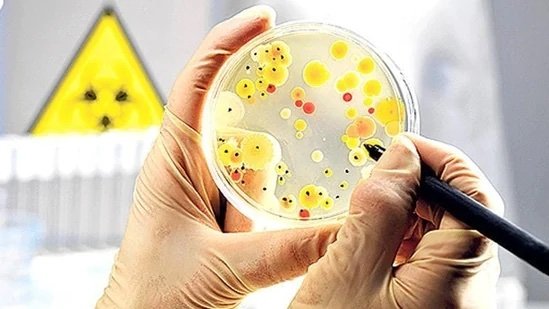Recently, according to Mohou.com, researchers at the University of California, Irvine, by studying the biochemical process of cyanobacteria from the Atacama Desert in Chile that absorb nutrients from rocks, revealed that humans can3DPrinting and microbial technologies for new ways to colonize the Moon and Mars.
△Microbes play a vital role on earth. Why not use their powers for space immigration?
UCIResearchers in the Department of Materials Science and Engineering and the Department of Biology at Johns Hopkins University used high-resolution electron microscopy and advanced spectral imaging techniques to understand precisely how microorganisms modify minerals natural and synthetic nanoceramics.
Scientists have observed that cyanobacteria produce biofilms that dissolve magnetic iron oxide particles in gypsum rock and then convert the magnetite into oxidized hematite.
A key factor, scientists say, is the production of biofilms by cyanobacteria that dissolve magnetic iron oxide particles in gypsum rock and then transform the magnetite into oxidized hematite.
The team published its latest research results inMaterials today Organicmagazine, could provide a new idea for new methods of bionic mining. The authors also state that they believe these results are consistent with a large-scale study.3DUsing microorganisms in printing is a step forward, and in the future this technology could be used in civil engineering in harsh environments like the Moon and Mars.
Corresponding author of the studyUCIMaterials teacherDavid KisaïlusHe said: “Through a biological process that has evolved over millions of years, these tiny miners dig into rocks and extract minerals vital for physiological functions, such as photosynthesis, that allow them to survive. Could similar biochemical methods be used in humans? the minerals we find valuable?This project will take us down that path. “
Co-author of the studyJocelyne DiRuggiero“The Atacama Desert is one of the driest and most inhospitable places on Earth, but the cyanobacteria found in gypsum samples collected there by the Johns Hopkins University teamChroococcidiopsishave evolved amazing adaptations to survive in rocky habitats. “
Some of these properties, she added, include the production of chlorophyll, which absorbs far-infrared photons, and the ability to extract water and iron from the surrounding minerals they contain.
DiRuggieroHe said: “Cyanobacterial cells promote magnetite dissolution and iron dissolution by producing abundant extracellular polymers, leading to the dissolution and oxidation of magnetite to hematite. In the presence of magnetite nanoparticles, siderophores (produced by bacteria “
Kisailus“When we mine minerals, we have to select the ore, and mining those ores is just as difficult. Then we often have to undergo extreme processing of those ores to convert them into something valuable. So this approach can come at a financial and environmental cost.

△Researchers say this technology can use biochemical methods to obtain minerals we consider valuable
KisailusHe says he is now considering a biochemical approach that uses natural or synthetic analogs of siderophores, enzymes and other secretions to process minerals, rather than using large grinders. He says there is also a way for microbes to exploit similar biochemical capabilities to produce engineered materials on demand in less convenient locations.
KisailusHe said: “I call it ‘lunar forming’ rather than terraforming. If you wanted to build something on the moon, we could use3DPrinting technology creates a medium and then allows microorganisms to reconfigure it into something valuable, rather than letting people do it. This is a research topic in my biomimetic and nanostructured materials laboratory. Why reinvent the wheel when nature has perfected it over hundreds of millions of years? “
Source: Antarctic Bear
Daguang focuses on providing solutions such as precision CNC machining services (3-axis, 4-axis, 5-axis machining), CNC milling, 3D printing and rapid prototyping services.












































